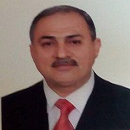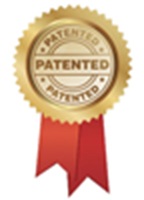
History taking in pediatrics
How to take History?
In pediatrics
Prepared and Revised by:
Assistant professor Dr.Mohammed Mahir Mushref
Dr.Rana Fahmi Shitran
Dr.Ahmed Abdulkareem
History taking in pediatrics
1-PERSONAL DATA
Patient name
Age: if<2 years write in months
Sex : Some diseases have sex predilection for example in X linked diseases Males are more commonly and more severely affected than females. Female carriers are generally unaffected, or if affected, they are affected more mildly than males.
Residence: some diseases are common or endemic in certain areas.
Date of admission : e.g. admitted on the 2nd of march or mention the no of days in hospital
The person from whom history taking
2-CHIEF COMPLIANT AND ITS DURATION :
Use patient words like frequent bowel motion for diarrhea, yellowish discoloration for jaundice , abnormal body movements for fit .
3-HISTORY OF PRESENT ILLNESS:
this part include
-Pre-hospitalization history: each symptom should be analyzed regarding ( onset ,nature ,location ,radiation , relieving and aggravating factors , and associated symptoms) . asking question related to that system.
Any history in pediatrics should ask about ( appetite ,feeding, , activity , sleep)
-What happened before admission : medications , medical interference ,duration of treatment and response should be mentioned.
-hospitalization : should include investigation taken, medication, received blood or plasma the progress of illness and any change in activity, sleep, or feeding).
4-REVIEW OF SYSTEMS :
according to child age
-Gastrointestinal tract :
1-swallowin difficulties
2-vomiting or nausea :amount , frequency , duration ,projectile or not, color of vomitus (bile , blood ,associated with clot or not .
3-Abdominal pain : site , onset , duration, radiation, nature, association ,relieving and aggravating factors .
4-diarrea:frequency , amount ,consistency ,associated with mucous , blood. malodourous , floating on water ,abdominal pain.
5-costipation: time and frequency of defecation ,associated with abdominal , rectal or anal pain , associated with vomiting , also describe the appearance , color , consistency and character of feces .
6-pruritis
7-jaundice :onset ,color of urine , color of stool , itching ,associated symptoms ,history of drug ingestion .
8-rectal bleeding : pain ,blood color ,timing of bleeding with defecation ,severity ,associated with mucous or pus unformed stool or urgency
-Respiratory system:
1-shortness of breathing :onset , intermittent or persistent ,exercise induced, nocturnal or diurnal , associated with cough, cyanosis, breath holding, severity , aggravating or relieving factor.
2-cough :type of cough ,dry or moist, accompanied by sputum ( swallowed ,or expectorated, watery ,mucoid , mucopurulent , blood stained). Associated pain , vomitus after cough wheeze and nasal discharge. More severe at day or night . disturb sleep.
3-chest pain
4-hemoptysis: frequency , duration, degree of bleeding
-cardiovascular: fainting attacks , cyanosis , squatting ,chest pain , palpitation, breathless on exertion or feeding
-genitourinary: urgency , frequency ,dysuria, nocturnal enuresis, hematuria.
-neurological :fit (preceding fever or not state of patient before and after fit ) ,the type of movement observed , up rolling of eyes, frothy secretion from mouth ,duration stopped spontaneously or by medications, injuries , state of consciousness and incontinence after fit . faint ,headaches ,anosmia ,visual disturbance , parasthesia , weakness , visual disturbance.
-musculoskeletal : limp ,joint pain , swelling , skin rash.
5- PAST HISTORY
-perinatal history: which include
*prenatal history : age of mother , antenatal care ,any disease D.M , H.T ,hemorrhage, fever . x-ray exposure ,drug taken , smoking or alcohol consumption .
*natal : mode of delivery (NVD or CS and the cause of C/S),gravidity, parity , abortion ,types of anesthesia length of labor , complication , duration of rupture membrane.
*post natal :term or pre term, single or multiple , cry immediately or not , need NCU for any reason , birth weight , meconium stained liquor , passage of urine or meconium in first day .
-past medical history : any admission to hospital ,time of admission, for same disease or other disease, length of stay in hospital , discharged well or on medication .history of atopy ( dermatitis, rhinitis) . history of communicable diseases.
-drug history : name of drug , dose , duration , mode of administration , chronic use or not . drug allergy .history of blood transfusion .
-past surgical : any operation include circumcision ,date, cause of operation , any complication .
6-VACCINATION HISTORY :
routine national immunization in iraq 2017
|
VACCINE |
AGE |
|
Hep B ,BCG ,OPV 0 |
0-1 week |
|
Hexavalent (DTaP,Hep B ,HiB,IPV) OPV, Rotarix1 (or Rota Teq 1) , pcv 13 1 |
2 months |
|
OPV 2, Rotarix 2(or Rota Teq 2) , pcv 13 2 Second (acellular )pentavalent (DTap-Hib-IPV) |
4 months |
|
Hexavalent (DTaP,Hep B ,HiB,IPV), OPV 3 ,pcv 13 3 IF, Rota Teq (pentavalent) was used in 2 and 4 months give Rota Teq 3 . Rotatrix (monovalent ) is only 2 doses |
6 months |
|
Measles , Vitamine A 100000 IU |
9 months |
|
MMR 1 |
15 months |
|
OPV 4 , second ( acellular ) pentavalent (DTaP ,HiB,IPV), Vitamine A 200000 IU |
18 months |
|
OPV,MMR 2,Vitamine A 200000 IU Second (acellular) Quadrivalent (DTaP –IPV) |
4-6 years |
BCG : first week, intra dermal in upper 1/3 of left deltoid .
DPT:I.M
OPV: 2-3 drops orally
HEP B: I.M thigh
MMR: subcutaneous
7-DEVELOPMENTAL HISTORY (MEDIAN AGE)
-Gross motor : newborn: limb flexed , symmetrical posture
6-8 weeks: raised head to 45 degree
6-8 months: sit without support
8-9 months: crawling
10 month : walk around furniture
12 months: walking unsteadily
15 months : walk steadily
-fine motor : 6 weeks :follow moving objects of face by turning head
4 m :reach out for toys
6 m : transfer object from hant to hand+ palmar grasp
10 m : pincer grip
14 m :scribbles with a pencil
Pencil skills : circle (3 y) , cross (4 y) , square (4 and 1/2 years), triangle (5 years ).
Hand skills : building with bricks : tower of three (18 m) ,tower of six (2 y) ,tower of eight (2 and 1/2 years ).
-social, behavioral and emotional: 6 w: smile responsively
8 m: puts food in mouth
1o m :waves bye bye
12 m :drinks from a cup
18 m: holds a spoon and gets food safely to mouth
2 y :dry by day , pulls off some clothes.
3 y :interactive play.
-speech , language , and hearing:
newborn : startles to loud sound
3 m :vocalize alone or when spoken to coos and laugh
7 m:turns to soft sounds out of sight.
7-10 m: say dada, mama
12m: 2-3 words other than baba , mama
18m: show four pats of body
20-24 m:use 2-3 words to make simple phrases.
2and half- 3 years: take consistently in 4-4 word sentence.
8-FEEDING HISTORY:
-exclusive breast feeding : number of feedings , using both breasts , duration of feeding , difficulties in feeding , baby quiet , calm , sleep .
-exclusive bottle feeding : no of feeding , no of ounces each feed , type of milk , no of bottle, way of sterilization , source of water used in milk preparation , how long the can of milk lasting , calculate if taking enough calories
-mixed feeding : bottle and breast feeding
-solid food : started at 6th month , one type of food each time to see sensitivity , not added sugar or salt .
Calculation of total daily requirement and total amount of milk in a bottle feed infant .
Note : 1 once =28 ml = 20 kcal
The caloric requirement for children up to 1 year =120 kcal /kg/day.
No of feeds : birth -2ws :every 2 hrs
2ws – 3ms :every 3 hrs
>3 ms :every 4 hrs
9-FAMILY HISTORY :
Age and state of both parents ,consanguinity (relative or not ) the risk of genetic disorder for offspring of first cousin 6-8% double the risk in general population (nelson textbook of pediatrics 20th edition p595)
, no. of children , order of this child, health states of other siblings , history of death in family children and the cause, family history of asthma ,eczema, Tuberculosis, cardiovascular disease and other diseases .
10-SOCIAL HISTORY :
-occupation of parents , including frequent and prolonged parent absence.
-house hold ( rural or urban)
- socioeconomic state ,crowding in house
- sanity in house and water supply, any animals in house , smoking.
-major life events : divorce ,major illness , death , accident ,separation .
-psychiatric illness: depression
-substance abuse
The family may use the child to seek for help
- poor school performance , excessive crying, and sleep disturbance are common problems .




